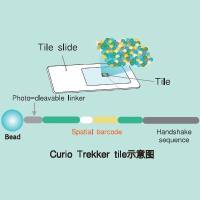Mapping Protein-DNA Interactions Using In Vivo Footprinting
In vivo footprinting is a technique that enables one to detect protein-DNA interactions as they are occurring in a cell. The principle behind this technique is similar to the principle behind the in vitro footprinting technique: Both rely on the fact that a bound protein often causes its binding site to be protected from cleavage by an endonuclease or from modification by a chemical agent. The major difference between in vivo and in vitro footprinting is that in the first method, cleavage of the DNA molecule is carried out within the nucleus following the in vivo binding of proteins to DNA in the context of chromatin, whereas in the second method, cleavage occurs in the test tube with purified DNA and protein extracts (or purified proteins) that are incubated together. Furthermore, footprints and hypersensitive sites due to deformations of DNA in chromatin are also detected by in vivo footprinting. Hence, compared with data obtained by in vitro footprinting, data obtained by in vivo footprinting may be more significant and representative of the true events that occur in the living cell.
![预览]()






